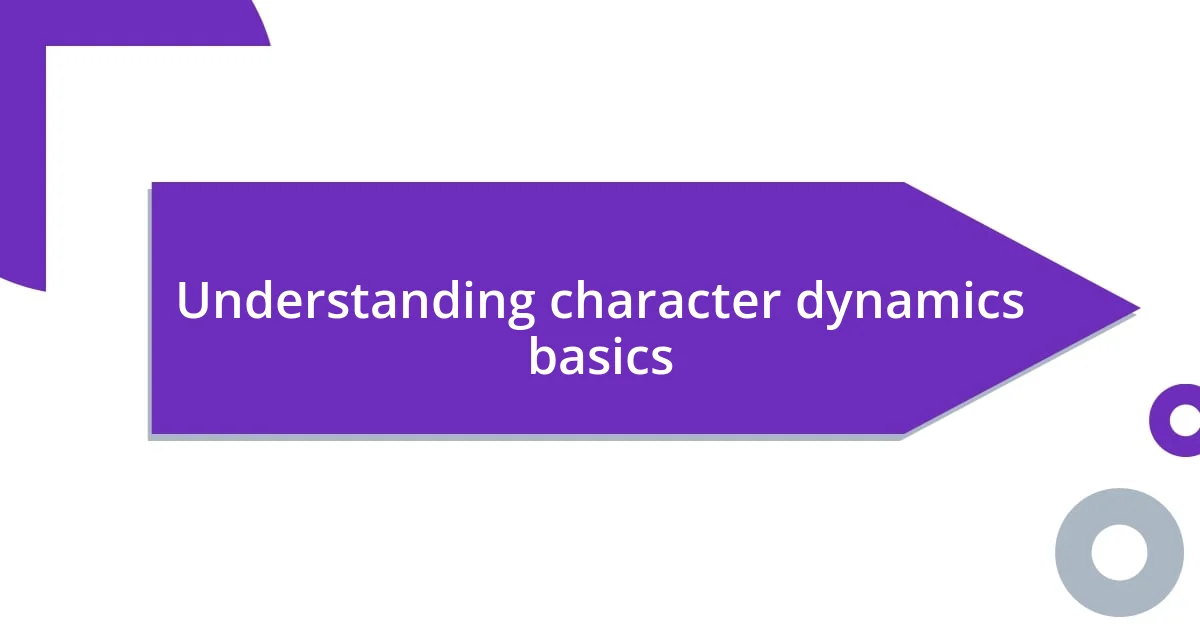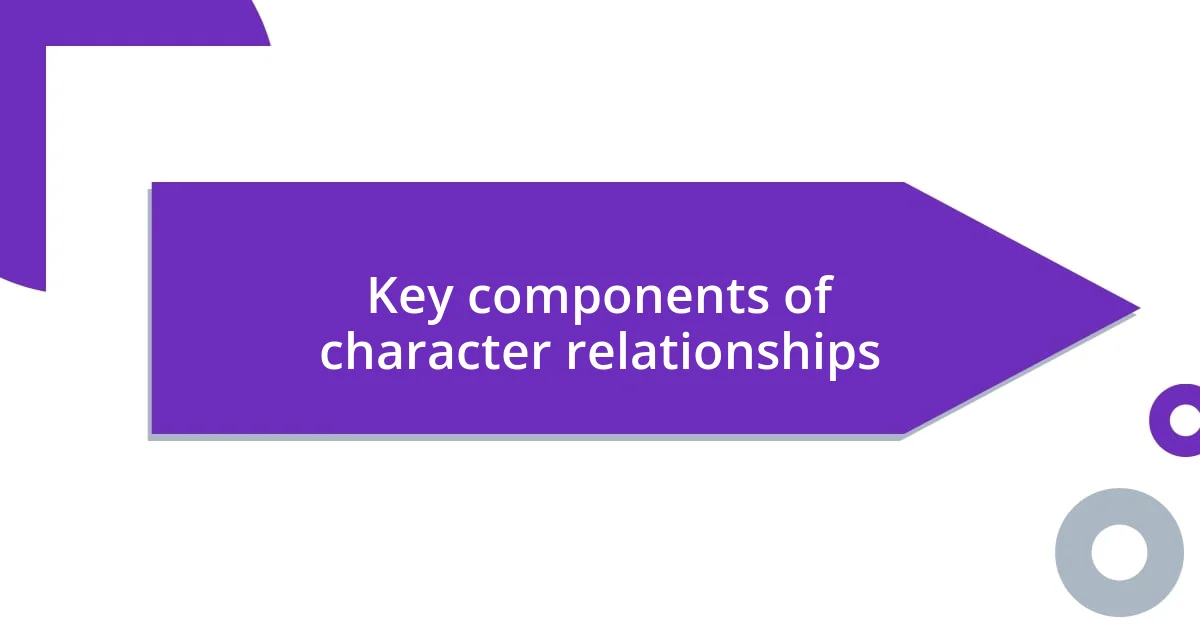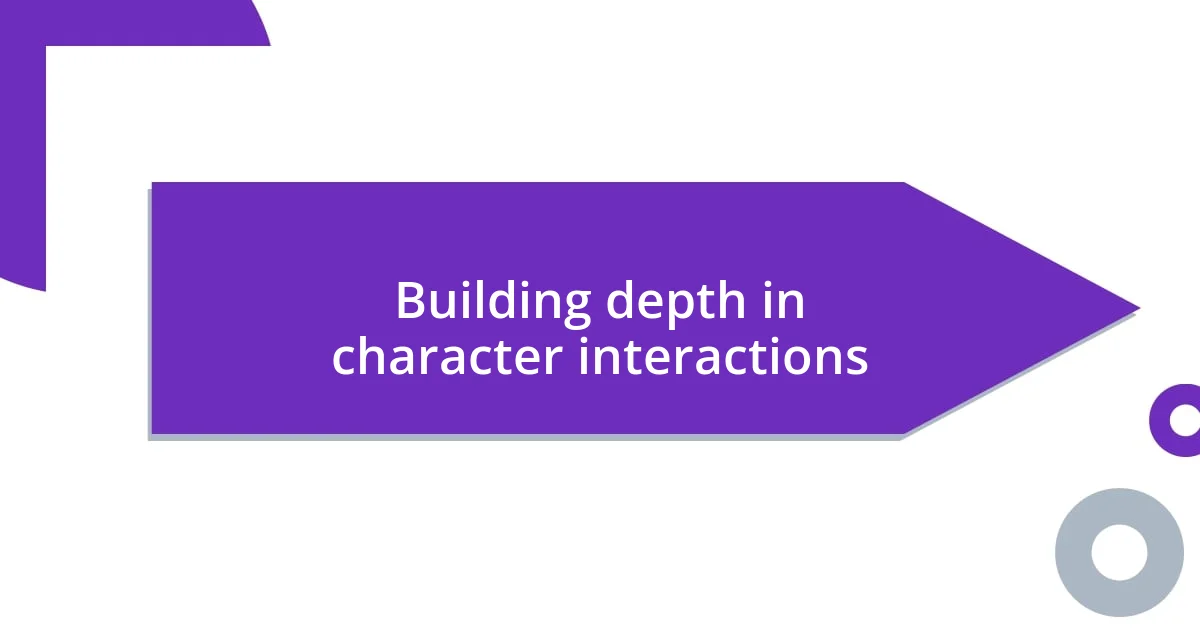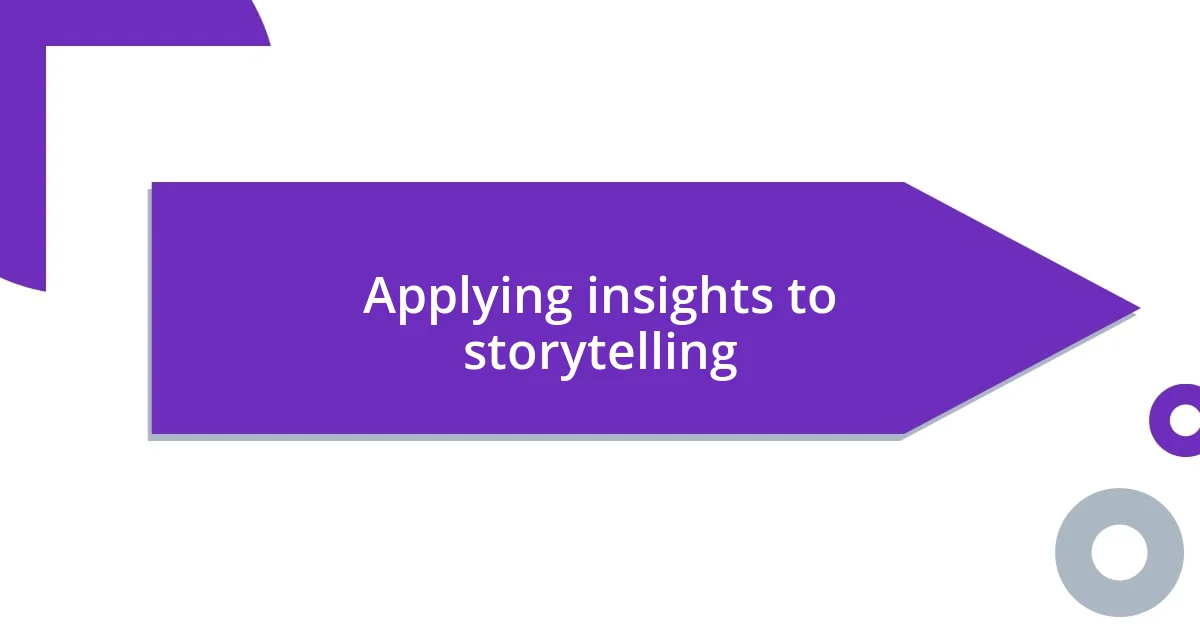Key takeaways:
- Character dynamics significantly influence the narrative by shaping relationships, creating tension, and guiding emotional engagement between characters.
- Key components of character relationships include conflict, emotional connection, and trust, which are essential for creating depth and authenticity in character interactions.
- Practical exercises such as writing character diaries, role-playing, and creating character maps can enhance understanding of character motivations and their impact on storytelling.

Understanding character dynamics basics
Character dynamics refer to the interplay between different personalities within a story, shaping the narrative and influencing the overarching themes. I remember when I first immersed myself in a book where the characters’ relationships sparked intense emotions in me. It made me wonder: how do these connections truly drive the story?
Thinking back, a pivotal moment in my understanding of character dynamics came from observing how subtle shifts in dialogue could alter the relationship between two characters. For instance, a simple change in tone can either build intimacy or create distance. Have you ever felt that immediate shift in a conversation? It’s fascinating how those nuances can completely transform a scene and our perception of the characters involved.
Reflecting on character dynamics also led me to realize how integral they are in creating tension and resolution. I recall a film scene where the protagonists were on the verge of conflict; their unspoken feelings made every glance impactful. The emotional stakes raised so many questions in my mind about their past experiences, making me invested in their journey. Isn’t it intriguing how our understanding of these dynamics can enhance our engagement with the story?

Key components of character relationships
When I reflect on character relationships, one key component is the concept of conflict. It’s usually the heart of any relationship, whether it’s a romantic partnership, a friendship, or even a family tie. I recall reading a novel where two friends faced a betrayal that tested their bond. The tension that arose from their conflicting desires resonated deeply with me, illustrating that without some form of conflict, characters might lack depth or an interesting arc.
Another important aspect is the emotional connection between characters. I’ve noticed that the level of empathy or understanding they have for one another can change the trajectory of their relationship. For instance, in a recent series I watched, one character took the time to truly listen to another’s fears, which created a tangible bond between them. It made me consider how these emotional layers not only enrich the narrative but also resonate with our own experiences. Don’t you think emotional connections provide the substance that keeps us engaged?
Trust and vulnerability are also pivotal in character relationships. I remember watching a film where a character had to reveal a deep secret to foster trust, leading to a beautiful moment of vulnerability that brought them closer. This showed me that characters need to open up to each other for their relationships to grow authentically. It’s a reminder that real relationships often thrive on honesty and the courage to be vulnerable. What insights have you taken away from such moments in stories?
| Component | Description |
|---|---|
| Conflict | The struggle between characters that creates tension and develops their arcs. |
| Emotional Connection | The feelings and shared experiences that deepen relationships. |
| Trust and Vulnerability | The willingness to be open and honest, fostering a more authentic bond. |

Analyzing character motivations effectively
Understanding the motivations behind a character’s actions can transform our engagement with the story. I’ve often found that digging deeper into a character’s background reveals layers of complexity I initially missed. For instance, while watching a gripping series, I realized a seemingly ruthless character had faced abandonment in childhood, which guided their actions throughout the narrative. This insight not only made me sympathize with them but reshaped my overall perception of the story.
Here are some effective strategies I use to analyze character motivations:
- Backstory Exploration: Delve into a character’s history to understand their current behavior.
- Behavior Patterns: Observe repeated actions or decisions that reveal core desires and fears.
- Conflict Responses: Analyze how characters react in tense situations, as this can reveal their true motivations.
- Dialogue Analysis: Pay attention to what characters say and how they say it; subtle cues can unveil hidden motives.
- Relationships: Examine how characters interact with others; their motivations often emerge through their connections.
By actively engaging with these elements, I’ve discovered that I can better anticipate character arcs and appreciate the intricate dance of motives that shapes the narrative. How do you think character motivations impact your connection with the story?

Building depth in character interactions
Building depth in character interactions requires a careful blend of authenticity and relatability. I remember a film where the lead character’s awkward silences spoke volumes more than dialogue could. It struck me how these moments created an intimacy that dialogue often fails to convey. Isn’t it fascinating how silence can sometimes enhance our understanding of a character’s emotional landscape?
Exploring shared experiences among characters is another vital ingredient. I once read a book where two characters met during a life-changing event, and their bond was forged through shared trauma. This made me realize that experiences, even the painful ones, can serve as powerful connectors, deepening relationships in unexpected ways. Have you ever thought about how a single event can redefine characters and their connections?
Lastly, the balance of power between characters can significantly impact their interactions. I’ve seen strong dynamics emerge when one character holds more influence, which forces others to navigate their vulnerabilities. For instance, in a recent novel, a character had to learn to stand their ground against a more dominant counterpart, leading to growth and tension. How does this dynamic reflect real-life interactions for you?

Practical exercises for character analysis
When it comes to practical exercises for character analysis, one effective approach I’ve enjoyed is writing character diaries. Imagine stepping into a character’s shoes and chronicling their thoughts and feelings throughout key moments. This exercise helps me explore their internal conflicts and motivations more vividly. By reflecting on their experiences, I often discover nuances in their behavior that I might overlook otherwise. Have you tried writing from a character’s perspective? It’s a fantastic window into their psyche.
Another exercise I find particularly revealing is role-playing discussions. Whether it’s with friends or even solo, adopting a character’s persona and expressing their viewpoints can shed light on their beliefs and choices. I once took part in a workshop where we acted out pivotal scenes from a play, and it struck me how embodying a character altered my understanding of their dynamics. It feels almost like stepping into a parallel world. Has immersing yourself in a character ever changed how you perceive the story?
Finally, I recommend creating a character map that visualizes relationships and tensions between characters. When I did this for a complex novel, the connections jumped out at me in ways I hadn’t anticipated. I could see who influenced whom and decipher the motivations behind their interactions more clearly. This exercise not only clarifies relationships but also highlights the intricate web of emotions that drive the narrative. How might visualizing a character’s connections transform your understanding of their role in the story?

Applying insights to storytelling
Using insights about character dynamics in storytelling transforms how narratives unfold. For instance, I once experimented with a script where a character’s fear of abandonment revealed itself through tiny actions—fidgeting with a bracelet or avoiding eye contact. These subtle cues allowed me to convey their emotional struggles without relying on exposition, making their journey even more relatable. Have you ever noticed how small traits can tell a much larger story?
Incorporating contrasting motivations between characters can create compelling tension. I recall a short story where two best friends had opposing goals: one sought stability, while the other craved adventure. This divergence not only sparked conflict but deepened their individual arcs, leading to a thrilling climax. How do you think different desires can influence character decisions and interactions in your own stories?
I also believe that integrating character flaws into the fabric of the plot can enrich the storyline. There was a time when I developed a character who was overly ambitious, leading them to make questionable choices. Watching them grapple with the fallout of their actions added layers of complexity, forcing me to confront moral gray areas. What are some flaws in your characters that might lead them on unexpected paths?














